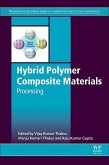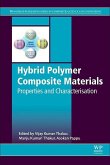Polymer Nanocomposites for Electromagnetic Interference Shielding is the first reference to cover the different carbon nanomaterial-based polymer systems for EMI shielding, enabling the development of these novel conductive polymers and their application in a range of EMI shielding contexts, such as aerospace applications. The book explores the use of polymer composites with carbon nanomaterials (such as single walled carbon nanotubes, multiwalled carbon nanotubes, carbon nanofibers, and graphene) providing the required level of conductivity.
In comparison to conventional metal-based EMI shielding materials, carbon-based conductive polymer composites are light-weight, corrosion-resistant and flexible, with good processability. However, the high proportion of carbon filler used in the most widely used polymer composites leads to a deterioration of the mechanical properties of polymer. The small diameter, high aspect ratio, high conductivity, and mechanical strength of CNTs make them an excellent option for creating conductive composites for high performance EMI shielding materials. Different polymers have different properties that can be used to achieve conductive composites with a variety of properties.
Provides in-depth knowledge of polymer systems using carbon nanostructures
Explores the use of different carbon nanomaterials (CNT, Graphene, hybrid carbon nanostructures) in conjunction with a range of polymers (polyolefins, polyurethane, polyester, etc.)
Offers an applications focus, investigating uses in sectors such as aerospace and the electronics and computer industries
Hinweis: Dieser Artikel kann nur an eine deutsche Lieferadresse ausgeliefert werden.
In comparison to conventional metal-based EMI shielding materials, carbon-based conductive polymer composites are light-weight, corrosion-resistant and flexible, with good processability. However, the high proportion of carbon filler used in the most widely used polymer composites leads to a deterioration of the mechanical properties of polymer. The small diameter, high aspect ratio, high conductivity, and mechanical strength of CNTs make them an excellent option for creating conductive composites for high performance EMI shielding materials. Different polymers have different properties that can be used to achieve conductive composites with a variety of properties.
Provides in-depth knowledge of polymer systems using carbon nanostructures
Explores the use of different carbon nanomaterials (CNT, Graphene, hybrid carbon nanostructures) in conjunction with a range of polymers (polyolefins, polyurethane, polyester, etc.)
Offers an applications focus, investigating uses in sectors such as aerospace and the electronics and computer industries
Hinweis: Dieser Artikel kann nur an eine deutsche Lieferadresse ausgeliefert werden.








